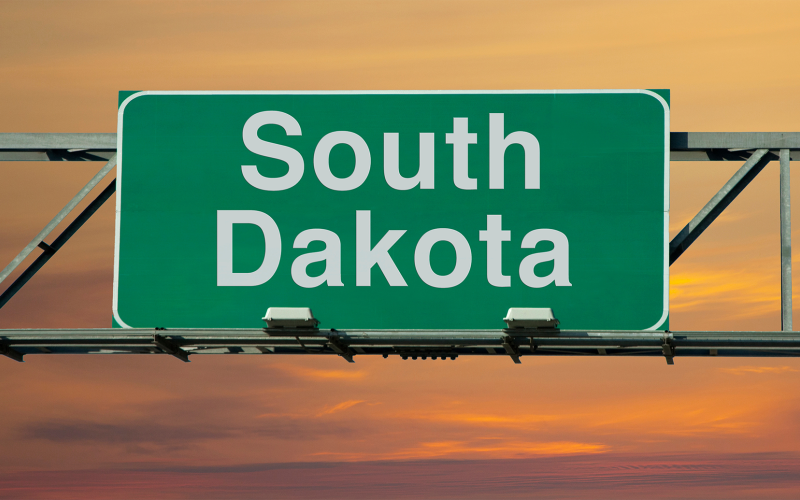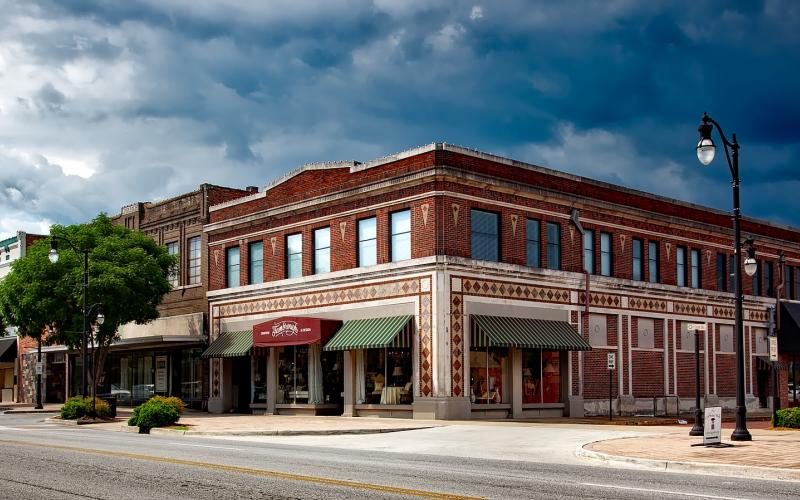As a person who grew up in a rural area, I’m proud to be a South Dakotan. I have always been a small-town gal and was raised in a family where community involvement was important, so I definitely have my ideas about how we can address some of the challenges in rural communities. While there are many challenges, and each one is a piece of the puzzle, I’d like to share my ideas about how developing entrepreneurial communities may be a way to address population decline.
First of all, why should we want to address a declining population? Well, as the population decreases, schools close. Businesses close. Services become less and less. Research shows that people want to live in rural areas but don’t believe the opportunities are there. If communities develop a system to connect people to opportunities, rural communities can stabilize their population, keep their schools, businesses and services, and maybe even increase them. In South Dakota, this can make a big difference. Over 95% of our communities have a population of 5,000 so we are definitely rural.
In 2021, a PEW Research Center Report looked at where Americans live and where they want to live, learning more of the population wants to live rural than do. A Washington Post article citing a 2018 Gallup Poll had similar findings. That poll found that many urban residents would like to make a move to rural America due to the high cost of living in big metros and stressors such as traffic and long lines. In that poll, 15% of respondents lived in rural areas, while 27% wanted to live in rural areas.
Think of any rural community. What would an increase of 5-10% of residents do for that community? Increasing the population of a community by 5% would bring 40 extra people to a community of 800 people. Would that make a difference?
The gap between the desire to live in a rural area and the actual percentage living in a rural area is evident. So why don’t they make the move? Quite simply, big metro areas tend to be where the jobs and opportunities are. How many times does an organization in a rural community offer someone a job and that person turns it down or leaves in a few months because the spouse can’t find a job related to their career field in that area?
But what if the jobs and opportunities were available in a rural community? According to the research we have done through the development of our Marketing Hometown America program, those most likely to move to a rural community are from that rural community or have a connection to that community through friends, family, or maybe have visited there.
Slowing the outflow of young people from rural areas has been a topic of concern to rural leaders for decades. For the past decade, surveys completed by junior high and high school youth across the country have shown us that rural communities may be underestimating the interest of young people building their future in their hometowns.
When National Youth Survey Results were compared to rural youth surveys, rural youth had an interest in returning home. Why would rural youth like to be in their hometown communities? Family ties and a good place to raise a family were 2 reasons given. Why might they not return? The most common reason shared was lack of opportunity. If people want to live in rural areas, and those most likely to make the leap to living rural have a connection to the community, doesn’t it make sense to work with our youth to show them what opportunities are available at home?
The labor force is changing quickly! Many changes are due to technology, but today's workers also think differently. While many people aspired to climb the corporate ladder, moving up in a company is no longer a motivator for many people. Instead, people want to feel a sense of belonging and achievement.
Danna Larson, founder of Rural Revival, says that we need to understand that it is not just the lure of city life that draws young people to leave their rural communities; it is also a perceived lack of opportunity and encouragement to “not come back” that drives young people away from their hometowns. Community leaders who work with young people can begin to change attitudes among students about the community.
The Integrated Youth Engagement Process of Energizing Young Entrepreneurs in Rural Communities is a model that shows how we can equip, support and engage young people, and each of these pieces must work together.
We equip young people by making education relevant to young entrepreneurs, and the earlier, the better. This is where entrepreneurial concepts are be integrated into curriculum from elementary school to post-secondary education. Entrepreneurship does not need to be a standalone class. By integrating entrepreneurship into existing courses, all students benefit.
Community support of young entrepreneurs can take several forms. The community itself can serve as a laboratory through job shadowing and apprenticeships. Perhaps a Youth Entrepreneur Fair is held, and young entrepreneurs are recognized and products are sold.
Some young entrepreneurs may be interested in applying their entrepreneurial skills in non-profit and public sector roles. By engaging young people in community leadership and service, they can develop a sense of community ownership. Have you thought about involving youth in local organizations and on boards? While that is a great way for youth to learn, it’s not just a learning experience for youth. Young people have valuable insights about their community so the adults involved can learn a lot too.
It's important for rural communities to develop support systems for entrepreneurs.
Entrepreneurs are the backbone of a community’s economy. They start new businesses or expand existing ones. Many entrepreneurs hire others in their community, creating new jobs. New ideas and opportunities keep communities vibrant. Small businesses have long been important in rural communities. Don’t just think of entrepreneurship like the startup companies in Silicon Valley! By some measures, entrepreneurship is highest in remote rural areas where people don’t have others nearby to depend on.
Entrepreneurship helps retain wealth and talent in a community. Entrepreneurs in rural communities are more likely to become community leaders and reinvest through philanthropy and volunteer work. In addition to the economic benefits of entrepreneurship, there are intangible benefits. According to Raymond W. Smilor of the Kauffman Center, in a paper titled "Entrepreneurship and Community Development," entrepreneurship has some real community development potential. He says that entrepreneurs are ultimate optimists and that their optimism is a "remarkably potent resource for building community." A community with a sense of pride and an entrepreneurial environment is likely to have the potential to create organizations focused on better health care, childcare and other social services.
In addition to entrepreneurship, rural communities can also recruit and support remote workers. Many rural communities are home to remote workers. You might not realize it because you aren’t sure what they do, but they are there. And there are many people who are planning to move as a result of remote work. And while there are areas of South Dakota that don’t yet have access to high-speed Internet, there are many rural areas that do, but are they promoting that?
Yes, people want to live in rural areas. Yes, there are opportunities in rural areas. How can we be intentional about using this information? How can we use this information to benefit the communities in which we live?


